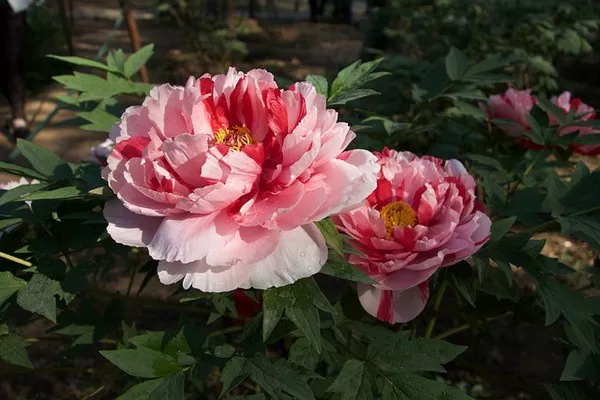Flowers, with their vibrant hues and delicate petals, have been cherished for centuries as symbols of beauty, love, and celebration. When adorning our homes, events, or special occasions, cut flowers bring joy and elegance. However, the fleeting nature of their beauty raises a fundamental question: How long do cut flowers last?
In this comprehensive exploration, we delve into the intricate world of floral biology, environmental factors, and post-harvest care to unravel the mystery behind the lifespan of cut flowers. From the moment a bloom is severed from its source to the eventual wilting, numerous variables come into play. By understanding the underlying science, enthusiasts and florists alike can prolong the vitality of cut flowers and enhance the longevity of their aesthetic allure.
The Journey Begins: Harvesting and Transportation
The lifespan of cut flowers commences at the very moment of harvesting. This initial step significantly influences their overall durability. Optimal harvesting involves selecting blooms at the right stage of development, ensuring they are neither too immature nor overly mature. Flowers harvested too early may fail to open fully, while those harvested too late might exhibit a shorter vase life.
Once harvested, flowers embark on a journey from the field to the consumer. The transportation process is critical, as it exposes the blooms to varying environmental conditions. Proper packaging, temperature control, and hydration during transit play pivotal roles in preserving the freshness of cut flowers.
Water, the Elixir of Floral Longevity
Water is the lifeblood of cut flowers, sustaining their turgidity and delaying wilting. The hydration process, initiated immediately after harvesting, involves placing the stems in water to prevent air embolisms and promote water uptake. The composition of this initial solution, often containing floral preservatives, affects the longevity of the blooms.
Understanding the water needs of specific flowers is paramount. Different species exhibit varying preferences for water temperature, quantity, and purity. Maintaining an adequate water level and regularly changing the water in the vase can prevent the growth of harmful microorganisms, ensuring a healthier environment for the flowers.
The Battle Against Microbial Menace
Microorganisms, including bacteria and fungi, pose a constant threat to the longevity of cut flowers. Contaminated water serves as a breeding ground for these microbial adversaries, accelerating the decay of flowers. Floral preservatives, often included in commercial flower food, combat these threats by inhibiting bacterial growth and providing essential nutrients to the blooms.
Proper hygiene practices, such as cleaning vases and cutting tools, contribute significantly to the prevention of microbial contamination. The battle against these unseen foes is ongoing, requiring vigilance and adherence to best practices in floral care.
The Dance of Gases: Ethylene and Respiration
Flowers, like all living organisms, undergo respiration—a process that involves the exchange of gases, primarily oxygen and carbon dioxide. The byproduct of this metabolic activity is ethylene, a plant hormone that accelerates aging and wilting. Understanding the dynamics of ethylene and respiration is crucial in extending the lifespan of cut flowers.
Ethylene-sensitive flowers, such as roses and carnations, are particularly susceptible to premature aging when exposed to elevated levels of this gas. Separating ethylene-producing flowers from ethylene-sensitive varieties and ensuring proper ventilation in the floral environment can mitigate the negative effects of ethylene on cut flowers.
The Importance of Temperature and Light
Temperature and light are pivotal environmental factors influencing the longevity of cut flowers. Cold temperatures can impede water uptake, while excessive heat can accelerate water loss through transpiration. Striking the right balance is essential for maintaining the optimal physiological state of the blooms.
Additionally, exposure to direct sunlight can cause photobleaching, fading the vibrant colors of flowers. Indirect, diffused light is preferable for most cut flowers, prolonging their visual appeal. Refrigeration or cool storage areas are often employed to slow down metabolic processes and extend the shelf life of cut flowers.
Strategic Pruning and Maintenance
Pruning, the strategic removal of leaves and stems, is a key practice in prolonging the lifespan of cut flowers. Leaves submerged in water can promote microbial growth and nutrient depletion, while excess foliage can divert energy away from the blooms. Trimming the stems at an angle underwater with sharp, clean tools facilitates water absorption and prevents air from entering the vascular system.
Regular maintenance, including the removal of spent flowers and yellowing foliage, encourages the plant to channel its energy into developing new buds. This meticulous approach enhances the overall appearance of the floral arrangement and extends the enjoyment of the remaining blooms.
A Symphony of Factors: The Interplay of Genetics and Species
The lifespan of cut flowers is inherently tied to the genetic makeup and species-specific characteristics of each bloom. While some flowers naturally possess a longer vase life, others are more ephemeral. Understanding the specific needs and tendencies of each species enables individuals to make informed choices when selecting and caring for cut flowers.
Advancements in floral breeding have led to the development of cultivars with extended vase life and enhanced resistance to environmental stressors. By staying informed about the latest developments in floral genetics, florists and enthusiasts can choose varieties that not only captivate with their beauty but also endure with resilience.
Conclusion
In unraveling the intricate tapestry of factors influencing the lifespan of cut flowers, we discover the delicate balance between nature and nurture. From the moment of harvest to the final bloom, a myriad of variables come into play, each contributing to the ephemeral beauty of cut flowers.
Armed with knowledge and a commitment to best practices, enthusiasts and florists alike can unlock the secrets to extending the lifespan of cut flowers. By embracing the symbiotic relationship between science and nature, we can celebrate and savor the fleeting yet enchanting presence of these botanical wonders in our lives. As we delve deeper into the science of floral care, the answer to the question, “How long do cut flowers last?” becomes not just a matter of time, but a testament to the art and science of preserving nature’s ephemeral masterpieces.


